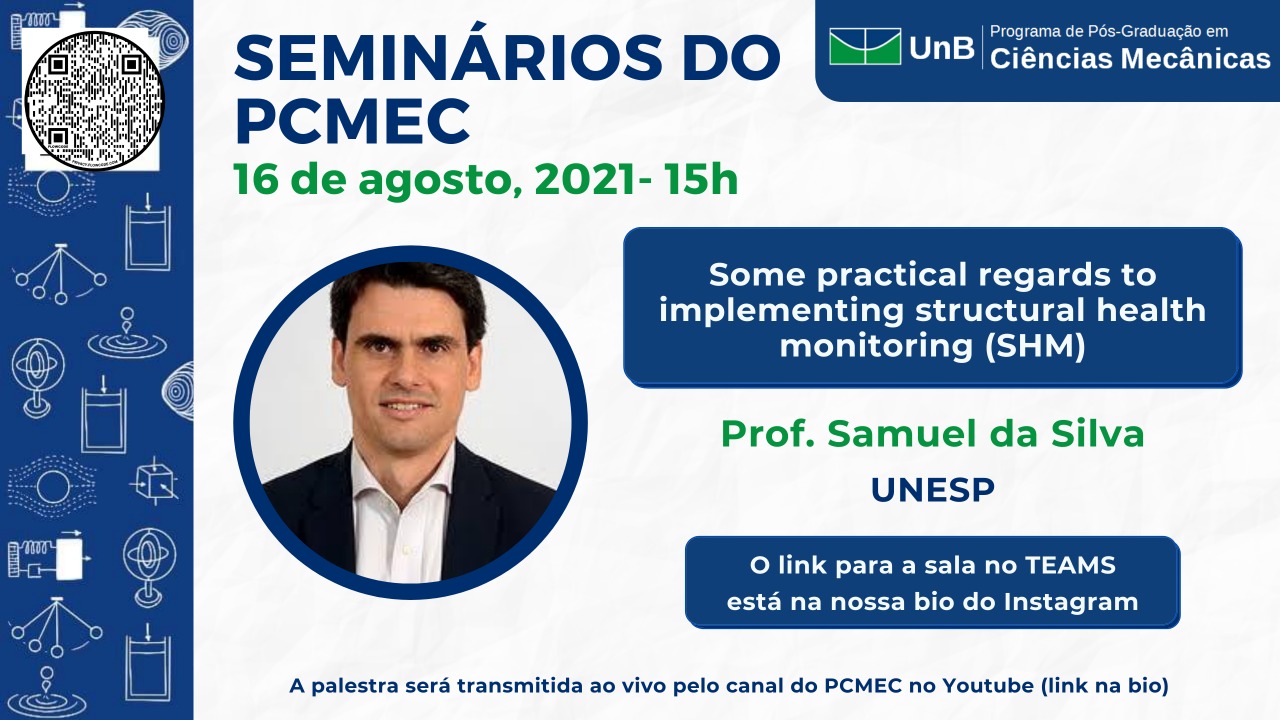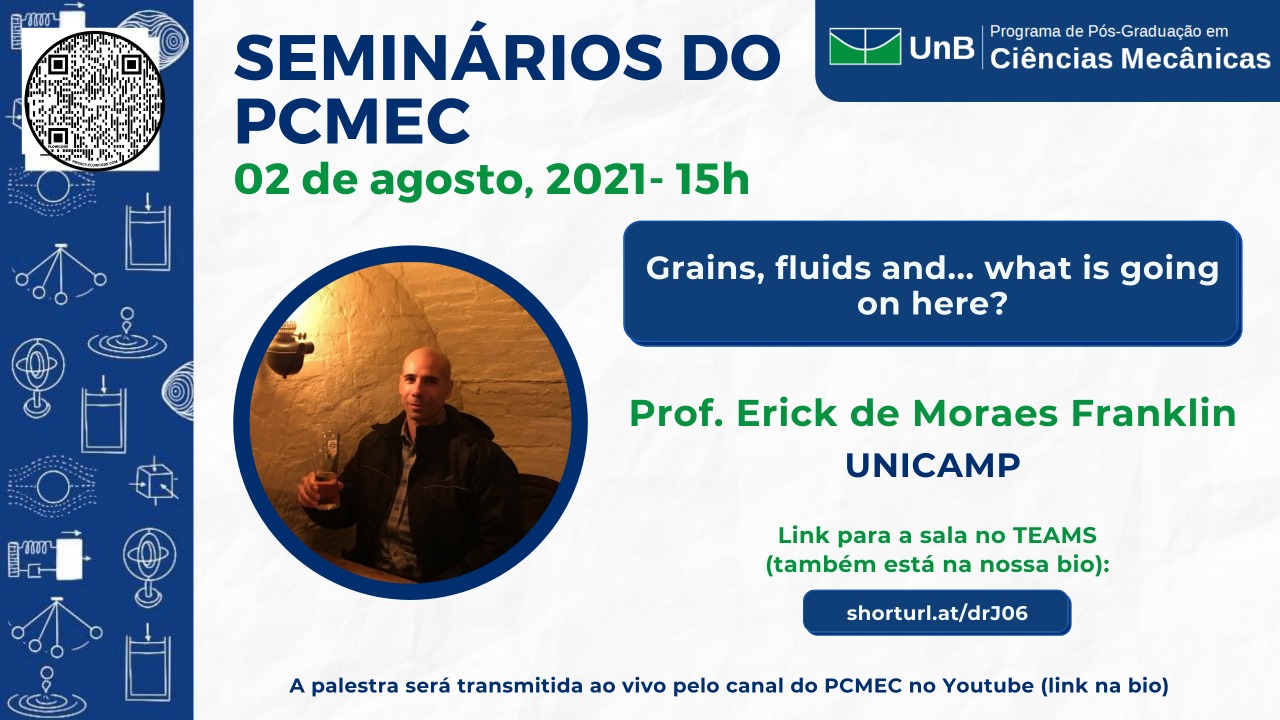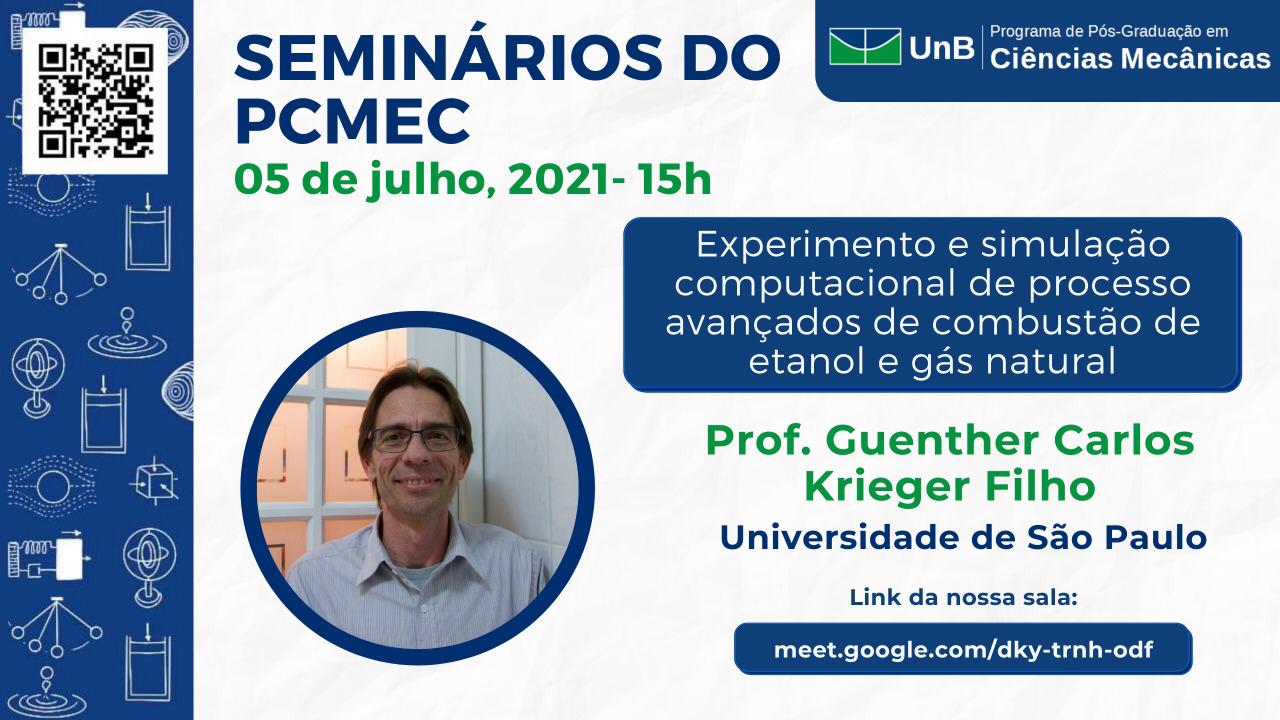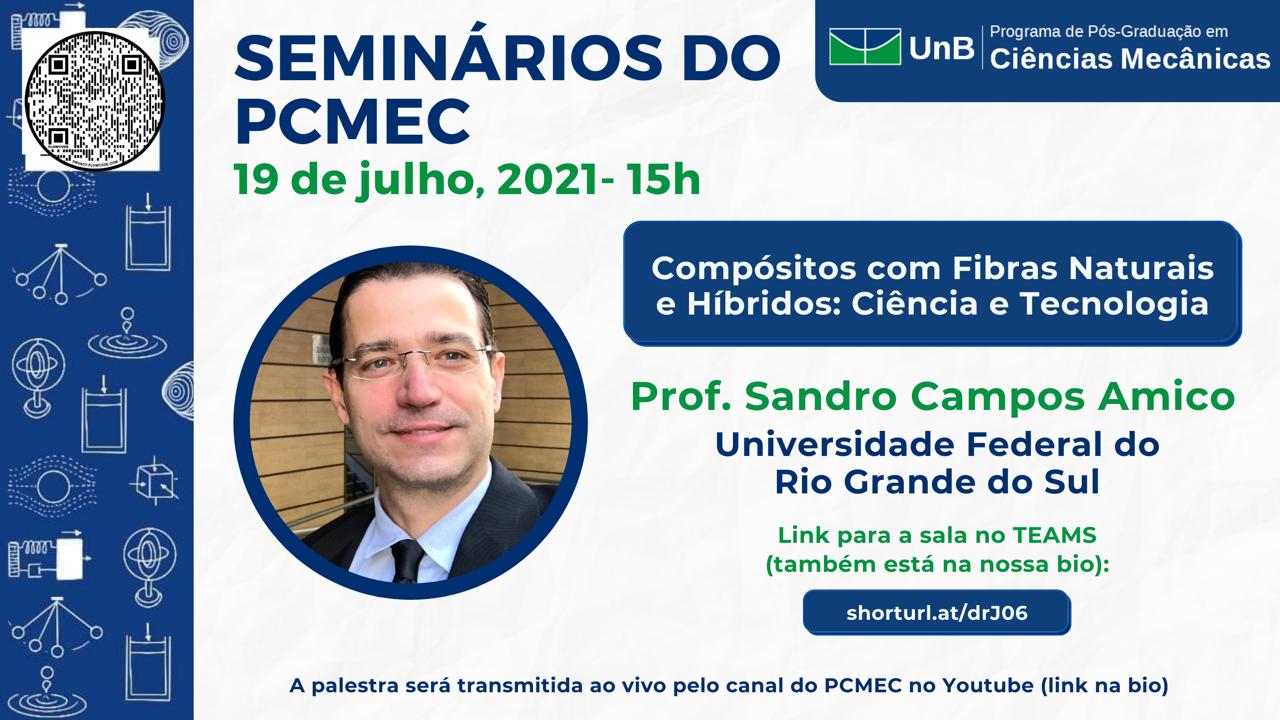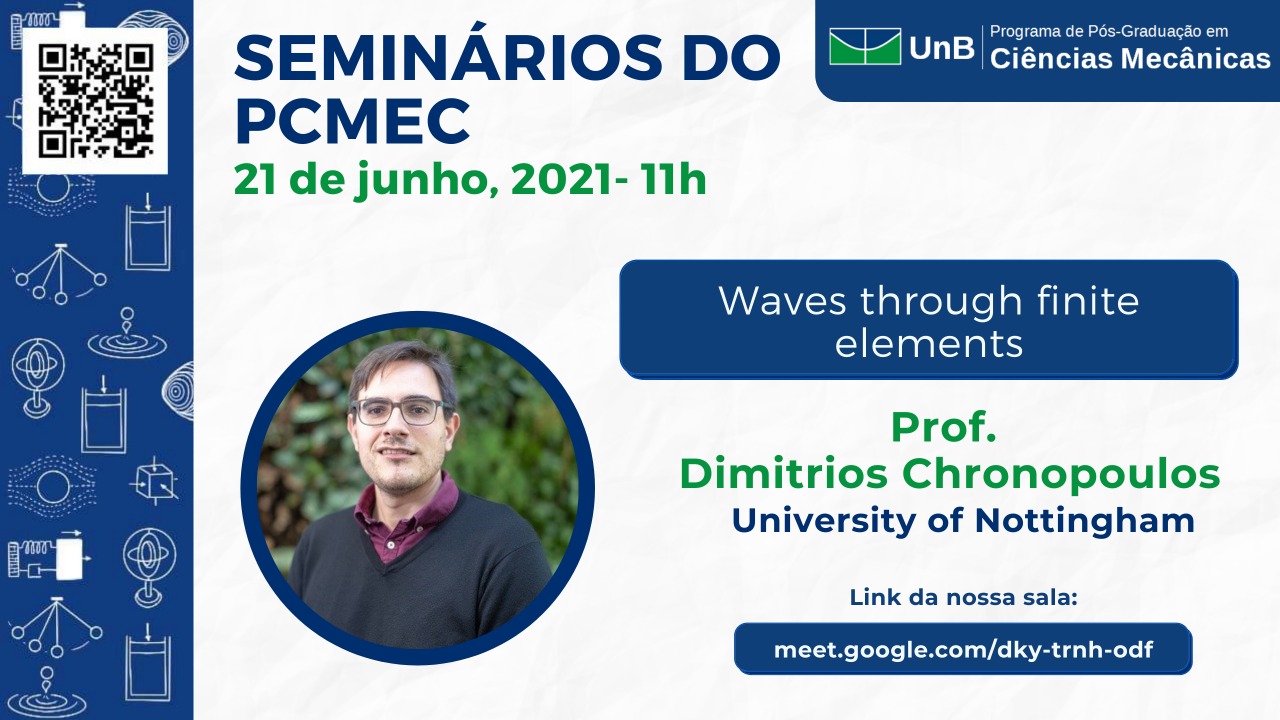
Link do Seminário: https://youtu.be/nvC__96W3Vo
Título: Waves through finite elements
Resumo: Complex, non-isotropic stratied and sandwich constructions are widely used in engineering applications such as in the aerospace and automotive industries, mainly because of their high stiffness-to-mass ratio and the fact that their mechanical characteristics can be designed to suit the particular purposes. Unluckily, this high stifness-to mass ratio being responsible for the increased mechanical efficiency, imparts as well ecient acoustic radiation. The modelling of the vibrational behaviour of complex composite structures has been a eld of extensive study in modern mechanical engineering. The knowledge of the wave propagation characteristics within such a structure seems to provide a key to decode and model its vibrational behaviour. This presentation will provide a description of the various nite element based approaches nowadays employed in order to compute wavepropagation within a periodic structure. Structures of arbitrary complexity, layering and material characteristics can be modelled through the 3D displacement elds used within the FE discretization procedure. The talk will present an overview of the employed theory as well as fundamental results related to:
• The periodicity conditions utilised in order to derive the propagating and evanescent wave mode equations.
• The advantages and disadvantages of formulating the wave propagation problemthrough a FE approach, compared to an analytical one.
• The pros and cons of the various types in which the FE-based wave propagation problem can be casted.
• The various numerical issues that could occur during the formulation and solution of an FE-based wave propagation problem.
• The FE/WFE hybridisation which results in coupling structures represented in the physical domain to ones represented through their wave space information.
The main objective of the talk will be to aid the attendants to differentiate between the various ways in which the FE wave propagation problem can be formulated as well as choose the approach that best ts their needs.
Short Bio: Prior to joining the University of Nottingham as a lecturer in Dynamics and Control (June 2013) Dimitrios conducted research in Structural Dynamics and Vibroacoustics within EADS Astrium (currently Airbus Defense and Space) at Les Mureaux, France (2009-'12). He was attributed a PhD from the Ecole Centrale de Lyon. He also holds a MSc in Automotive Systems Engineering by Loughborough University (2008-'09) and a Masters in Mechanical Engineering from the National Technical University of Athens (2003-'08). Dimitrios is a part of the Composites Research Group of the University of Nottingham.
